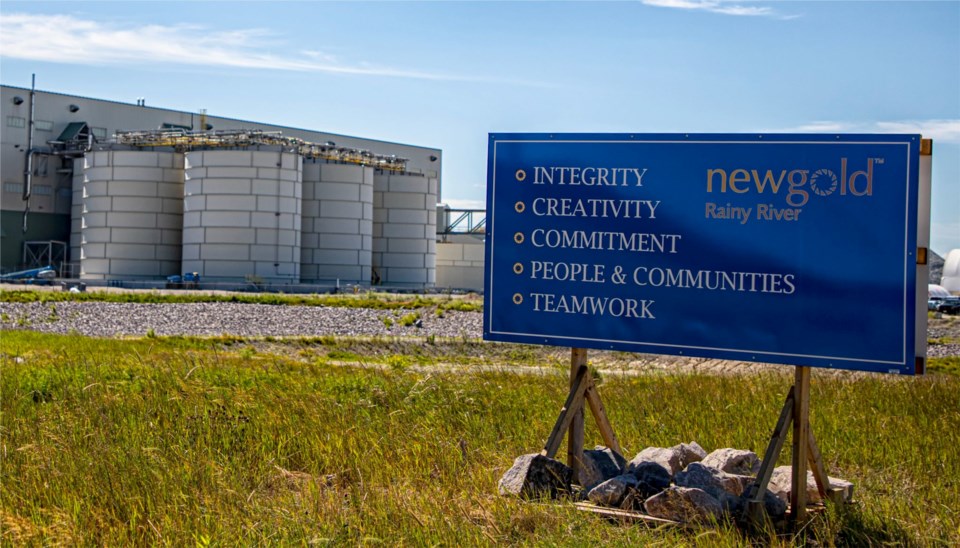More than a third of New Gold’s total spending at the Rainy River Mine last year stayed within Northern Ontario.
The Toronto-headquartered mining company released its annual Sustainability Report showing its northwestern Ontario open-pit operation generated $325.5 million in procurement spending with local, regional, national and international businesses and organizations.
Broken down, New Gold spent more than $10.4 million with local suppliers in 2021 for the mine site located 65 kilometres northwest of Fort Frances.
Local spending means dealing with businesses in the Rainy River-area, Atikokan and north to Kenora, Dryden and Red Lake.
Regionally, there was more than $111.7 million in spending, about 34 per cent of the total bill, while Indigenous procurement amounting to over $120.5 million, about 37 per cent.
Want to read more stories about business in the North? Subscribe to our newsletter.
With the mine being located within Treaty 3 territory, New Gold has eight impact benefit agreements (IBAs) with the Métis Nation of Ontario and 11 First Nation area communities.
The company said it is partnered with 16 Indigenous communities and an additional five non-Indigenous communities surrounding the mine.
“When possible we actively try to use local partners or encourage joint ventures with suppliers and local communities,” New Gold said the report, which covers safety, environmental, economic and social topics.
New Gold said procuring supplies and services locally deliver economic benefits to nearby communities, but also provide more “resilent” supply chains for the company itself.
The company said a business development officer is employed to engage with area communities, local suppliers and vendors, especially with Indigenous businesses, to help them navigate through the procurement process.
“In 2022 we are conducting an independent review of our procurement practices and standards at Rainy River to be more mindful of Indigenous inclusion from now until mine closure,” the report said.
“We seek opportunities for local and Indigenous vendors to participate in our supply chain and will continue to report on our annual spend through the LPRM (Local Procurement Reporting Mechanism).”
Sign up for the Sudbury Mining Solutions weekly newsletter here.
Commercial production at Rainy River began in October 2017. The workforce at the site is roughly 420 employees.
Over the next few years, mining operations will gradually shift from the pit to underground.
The pit life will last until 2025 as construction is underway for the underground portion with the development of the Intrepid Zone to extend the mine life to 2031. Initial underground production is targeted for the second half of this year.
As part of the closure plan, New Gold has already started surface reclamation efforts to recreate local bird habitat and re-vegetate some inactive areas through hydroseeding.
Besides running the Rainy River mine, New Gold operates the New Afton copper-gold mine in British Columbia. The company stopped mining its Cerro San Pedro Mine in Mexico in 2016 and is remediating the site.




